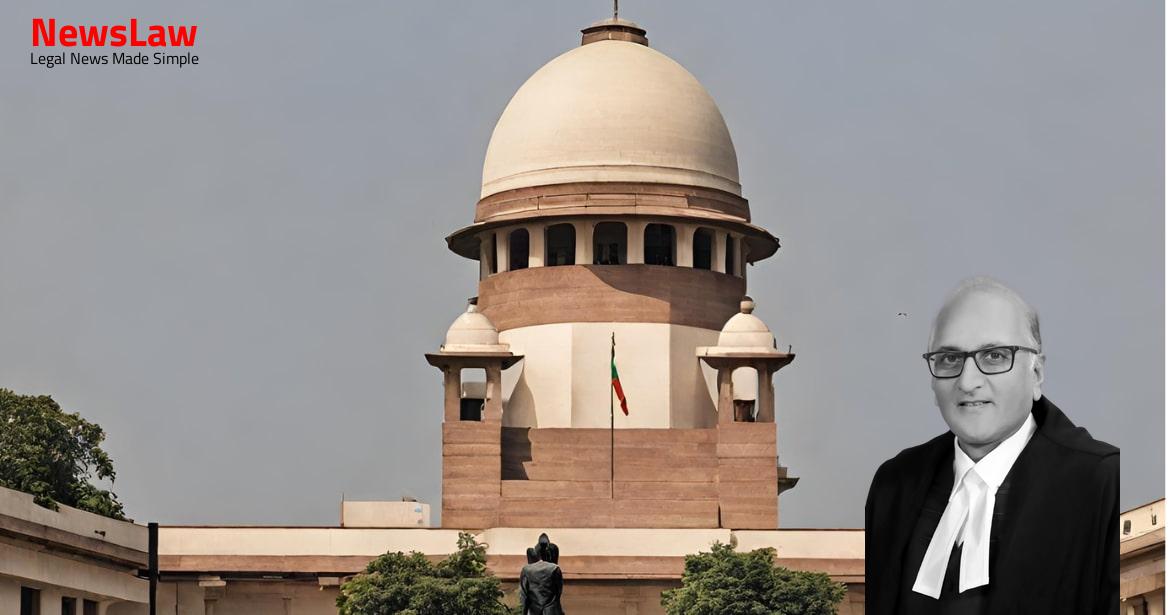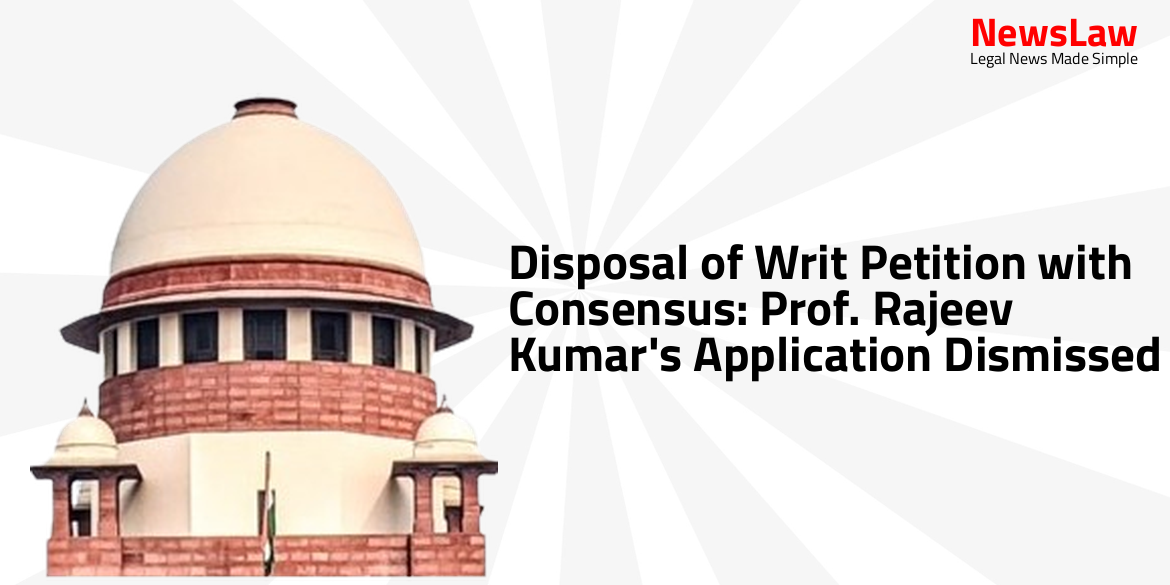By the said proceedings, Respondent No.1 had granted ex post facto clearance purporting to invoke paragraph-4.3 of the Notification issued in the year 2011 (hereinafter referred to as, ‘the 2011 Notification’) under the Environment Protection Act, 1986 (hereinafter referred to as, ‘the Act’). The appellant thereafter, according to it, started the process to seek approvals for laying an underground pipeline of 4.5 kilometres to the said storage facility. The third respondent, viz., the Tamil Nadu State Coastal Zonal Management Authority (hereinafter referred to as, ‘the State Authority’) considered the proposal and it forwarded the same through the second respondent, viz., the State of Tamil Nadu to the first respondent, viz., the Union of India, in the Ministry of Environment and Forests and Climate Change. While the recommendation of the third respondent was pending before the first respondent, appellant started laying the pipeline with the prior permission of the NHAI, the Chennai Fishing Harbour Committee and the Port Trust. The Tamil Nadu State Pollution Control Board, it would appear, intimated the third respondent that except for not obtaining prior clearance, there was no other violation. It has also constructed a storage facility, being engaged in the business of edible oil, for the purpose of storing the imported edible oil at a distance of nearly 600 meters from the location of the storage tank of the appellant in the first Appeal. THE SALIENT FEATURES OF THE ORDER DATED 08.03.2019 BY THE FIRST RESPONDENT 7.
The salient Features of the Order dated 08.03.2019 passed by the First Respondent: i.
The attempt of the appellants to support the clearance with reference to the fact that under permitted activities in CRZ I, storage of non-hazardous cargo, including edible oil, was permitted ‘within’ the limits of a port and a distinction, therefore, existed between the words ‘within’ and ‘in’, did not find favour with the NGT. The appellant in the first appeal was directed to pay environmental compensation in a sum of Rs.25 lakhs. We heard Shri Ranjit Kumar, learned Senior Counsel for the appellant in the first appeal and also Shri Dhruv Mehta, learned Senior Counsel for the appellant in the other appeal. In CRZ-II on the 12 other hand, storage of non-hazardous cargo such as edible oil, fertilizers and foodgrain is permitted ‘in notified ports’. He would point out that it may be absurd to disallow storage of foodgrains, fertilizers and edible oil in CRZ-II. Union of India and Others, this Court held that the Act does not prohibit grant of ex post facto environmental clearance. Union of India and Others. Shri Dhruv Mehta, learned Senior Counsel, would also contend that the matter may be viewed in the context of Principles of Sustainable Development and Polluter Pays Principle. Shri Anand Tiwari, learned counsel appearing on behalf of respondent 2 and 3 would also support the appellants. Archana Pathak Dave, learned Counsel for the Union of India equally supported the stand of the Government of India. Anitha Shenoy, learned Senior Counsel appearing on behalf of respondent No.5 strongly supported the order of the NGT and submits that the matter relates to the defending of the environment. The first notification in regard to the notification of Coastal Zone was issued in the year 1991. We may only further notice that among the other 4 categories of CRZ, the CRZ includes the water and the bed area between the LTL (LOW TIDE LINE)(which line is based on the lowest height of the water body during the spring tide) to the territorial water limit (12 nautical miles) in the case 18 of the sea and the water bed and area between the LTL at the bank to the LTL on opposite of the bank of the tidal influenced water bodies.
Prohibited activities within CRZ,- The following are declared as prohibited activities within the CRZ,- (i) Setting up of new industries and expansion of existing industries except,- (a) those directly related to waterfront or directly needing foreshore facilities; Explanation: The expression “foreshore facilities” means those activities permissible under this notification and they require waterfront for their operations such as ports and harbours, jetties, quays, wharves, erosion control measures, breakwaters, pipelines, lighthouses, navigational safety facilities, coastal police stations and the like.;” 23. Clause 3(ii)(a) reads as follows: “(a) transfer of hazardous substances from ships to ports, terminals and refineries and vice versa;” 26. It is declared that activities which are enumerated under paragraph-4 shall be regulated except those prohibited in paragraph-3. (c) Housing schemes in CRZ as specified in paragraph 8 of this notification; (d) Construction involving more than 20,000sq mts built-up area in CRZ-!1 shall be considered in accordance with EIA notification, 2006 and in case of projects less than 20,000sq mts built-up area shall be approved by the concerned State or Union territory Planning authorities in accordance with this notification after obtaining recommendations from the concerned CZMA and prior recommendations of the concern CZMA shall be essential for considering the grant of environmental clearance under EIA notification, 2006 or grant of approval by the relevant planning authority. Residential buildings, office buildings, hospital complexes, workshops of strategic and defence projects in terms of EIA notification, 2006.; (c) construction, operation of lighthouses; (d) laying of pipelines, conveying systems, transmission line; (e) exploration and extraction of oil and natural gas and all associated activities and facilities thereto; (f)
MoEF may specify for category of projects such as at (f), (g) and (h) of para 4; (g) Mining of rare minerals as listed by the Department of Atomic Energy; (h) Facilities for generating power by non- energy conventional resources, desalination plants and weather radars; (i) Demolition and reconstruction of (a) buildings of archaeological and historical importance, (ii) heritage buildings; and buildings under public use which means buildings such as for the purposes of worship, education, medical care and cultural activities;” 23 28. It read as follows: ” 4.3 Post facto clearance for permissible activities.- (i) all activities, which are otherwise permissible under the provisions of this notification, but have commenced construction without prior clearance, would be considered for regularisation only in such cases wherein the project applied for regularization in the specified time and the projects which are in violation of CRZ norms would not be regularised; (ii) the concerned Coastal Zone Management Authority shall give specific recommendations regarding regularisation of such proposals and shall certify that there have been no violations of the CRZ regulations, while making such recommendations; 24 (iii) such cases where the construction have been commenced before the date of this notification without the requisite CRZ clearance, shall be considered only by Ministry of Environment, Forest and Climate Change, provided that the request for such regularisation is received in the said Ministry by 30th June, 2018.” CRZ-1,- (i) no new construction shall be permitted in CRZ-1 except,- (a) projects relating to Department of Atomic Energy; (b) pipelines, conveying systems including transmission lines; (c) facilities that are essential for activities permissible under CRZ-l; (d) installation of weather radar for monitoring of cyclones movement and prediction by Indian Meteorological Department; 25 (e) construction of trans harbour sea link and without affecting the tidal flow of water, between LTL and HTL.
(c) necessary safety measure shall be incorporated while permitting such developmental activities in the area falling in the hazard zone; (d) salt harvesting by solar evaporation of seawater; (e) desalination plants; (f) storage of non-hazardous cargo such as edible oil, fertilizers and food grain within notified plants; (g) construction of trans harbour sea links, roads on stilts or pillars without affecting the tidal flow of water.” CRZ-11,- (i) buildings shall be permitted only on the landward side of the existing road, or on the landward side of existing authorized structures; (ii) buildings permitted on the landward side of the existing and proposed roads or 26 existing authorized structures shall be subject to the existing local town and country planning regulations including the ‘existing’ norms of Floor Space Index or Floor Area Ratio: Provided that no permission for construction of buildings shall be given on landward side of any new roads which are constructed on the seaward side of an existing road: (iii) reconstruction of authorized building to be permitted subject with the existing Floor Space Index or Floor Area Ratio Norms and without change in present use; (iv) facilities for receipt and storage of petroleum products and liquefied natural gas as specified in Annexure-II appended to this notification and facilities for regasification of Liquefied Natural Gas subject to the conditions as mentioned in sub-paragraph (ii) of paragraph 3; (v) desalination plants and associated facilities; (vi) storage of non-hazardous cargo, such as edible oil, fertilizers and food grain in notified ports; (vii) facilities for generating power by non-conventional power sources and associated facilities; Interestingly, in regard to the area between 200 meters to 500 meters falling in CRZ-III, paragraph-8 permitted storage of non- hazardous cargo such as edible oil, fertilizers, foodgrains ‘in’ notified ports.
The case of the appellant that the storage facility is located in CRZ II is beyond dispute. KTV Health Food Private Limited to lay pipeline from BD2 berth where the firm is laying a 10 inch pipeline for evacuation of the cargo. Appellants may be correct in contending that edible oil is not hazardous and that edible oil imports may be necessary to meet the requirement of a growing population.
A perusal of the 2011 notification reveals the following as the avowed objects: (i) ensuring livelihood security to the fisher communities and other communities living in the coastal areas, (ii) conservation and protection of coastal stretches; (iii) the protection of the unique environment of the coastal stretches and its marine area; (iv) promotion or development through sustainable manner based on 31 scientific principles taking into account the dangers of natural hazards in the coastal areas; (v) the aspect of sea level rise due to global warming. It is equally the duty of the Court to eschew from its consideration matters which may not be strictly germane to the object. The arguments of learned Senior Counsel have put in issue the scope of expression, “except transfer of hazardous substances from ships to ports, terminals and refineries and vice versa in the port areas” which was added in Para 2(ii) on 9-7-1997. It appears to have been added for the purpose of enabling transfer of hazardous substances from ships to ports, ships to terminals and ships to refineries and vice versa. Notwithstanding imperfection of expression and that exception clause is not happily worded, we are of the view that by applying purposive construction, the expression, “in the port areas” should be read as “in or through the port areas”.
Anitha Shenoy, learned Senior Counsel, would submit that the aforesaid decision turned on the facts obtaining therein and, in particular, the expression ‘in the port areas’, whereas the language used in paragraph- 8(II)(vi) and also the context should persuade this Court to place an interpretation advancing the object of a notification such as the 2011 Notification. The Court posed the question whether the transfer was to be confined to refineries and terminals which were located in the port area. But the provision did contemplate transporting of the material from the ship to the refineries as also to terminals and vice versa.
Norms for regulation of activities permissible under this notification,- CRZ-I (ii) Areas between LTL and IITL which are not ecologically sensitive, necessary safety measures will be incorporated while permitting the following, namely:- (f) storage of non-hazardous cargo such as edible oil, fertilizers and food grain within notified ports;” 42. Since the CRZ itself would terminate upon the 500 meters distance being obtained, this constituted, in other words, the residuary area, of CRZ-III. Interestingly, when it comes to storage of non- hazardous cargo, such as edible oils fertilizers and food grain ‘in’ the notified ports, it was permitted activity in area ‘B’ of CRZ-III under Clause 4 thereof, that is, an area located between 200 metres to 500 metres. Can it then be said that storage of non- 39 hazardous cargo, such as edible oil, fertilizers food grain, permitted in the notified ports in CRZ-III, Area ‘B’, be also permitted in CRZ-III Area ‘A’? 2) expressing a period of time during which an event takes place. Adverb 1) expressing movement that results in being inside or surrounded. The word ‘within’ has been defined in the same Dictionary as follows:- ” within Preposition 1) inside. 2) inside the range or bounds of we were within sight of the finish. One way of looking at the word ‘in’ the notified port in para 8(II)(vi) would be that storage of non- hazardous material is permitted inside the notified port. Chennai Port is a Port, which is, admittedly, a major port within the meaning of Major Ports Act, 1964.
—The Principal Commissioner of Customs or Commissioner of Customs may, subject to such conditions as may be prescribed, licence a public warehouse wherein dutiable goods may be deposited.” It is not the case of the appellants that the storage is located within the limits of the Chennai Port as contemplated in Section 2(q). Under Section 15 of the Customs Act, the date for determination of the rate of duty and tariff valuation of any imported goods in the case of goods cleared from a warehouse, under Section 68, is declared to be the 44 date, on which, a bill for entry for home consumption, in respect of such goods, is presented under Section 15. Section 7(a), to which reference may be necessary in view of the definition of the words ‘customs port’, reads as follows: “ Appointment of customs ports, airports, etc.-(1) The Board may, by notification in the Official Gazette, appoint- (a)The ports and airports which alone shall be customs ports or customs airports for the unloading of imported goods and the loading of export goods or any class of such goods;” 52. It reads as follows: “CRZ-11, – (i) buildings shall be permitted only on the landward side of the existing road, or on the landward side of existing authorized structures;” It is the contention of the appellants that even if it is found that the storage facility cannot be treated as permitted in the port, as it does not fall in the port, both having regard to the fact that CRZ-II constitutes an area where the regime is less harsh than the one contemplated in CRZ-I and also bearing in mind that edible oil is non-hazardous cargo and still, what is more important, in CRZ-II, facilities for receipt and storage of petroleum products and liquified natural gas can be permitted, and lastly, as a storage facility would constitute a building, which, in the facts of 47 this case, is located on the landward side of the existing road, the NGT was wrong.
Anita Shenoy, learned Senior Counsel, by pointing out that it would be plainly incongruous with the use of the words ‘storage facilities’ as contained in paragraph- 8(II)(vi), falling under permitted activities under CRZ-II with the word ‘building’, which must make the position clear that placed side-by-side, building cannot include the storage facility, which has been expressly articulated and permitted as long as it is ‘in’ a notified port. This is even though both handling and storage of petroleum products is permitted, both within a distance of up to 200 meters from the high tide line as also between 200-500 meters from the high tide line. As far as the case that is sought to be built up on the basis that since CRZ-II permitted buildings on the landward side of the existing road, we must notice that this is not the basis for the decision of the first respondent which was successfully impugned before the NGT.
It is submitted that the said activity under scrutiny is a permissible activity and regulated under para No 8(I)(i) (b), para No 8(I)(ii)(f) and para No 8.II.(vi) of the CRZ Notification, 2011.” 57.
Varghese (supra) involved the interpretation of Section 52 (2) of the Income Tax Act, 1961.
Also Read: https://newslaw.in/case-type/criminal/dereliction-of-duty-and-grave-lapses-a-legal-analysis/
This Court took the view inter alia that to invoke Section 52(2), it was not enough only to show that the fair market value of the capital asset as on the date of the transfer exceeded the full value of the consideration declared by the assessee by not less than 15 per cent of the value so declared. It is apart from all these that, no doubt, this Court went on to hold as follows: – “These two circulars of the Central Board of Direct Taxes are, as we shall presently point out, binding on the Tax Department in administering or executing the provision enacted in sub-section (2), but quite apart from their binding character, they are clearly in the nature of contemporanea expositio furnishing legitimate aid in the construction of sub-section (2). 701] where Mookerjee, J., stated the rule in these terms: “It is a well-settled principle of interpretation that courts in construing a statute will give much weight to the interpretation put upon it, at the time of its enactment and since, by those whose duty it has been to construe, execute and apply it.”
, the 2011 notification, the understanding of the authorities if that be the basis of the contention, cannot overwhelm our understanding of the notification. The question would arise as to up to what distance from the port area it would be considered as the ‘in the port area’. The District Coastal Zonal Management Authority will consider any application made in regard to the continued use of the pipeline and take a decision in accordance with law within a further period of six weeks from the date of the receipt of the application.
Case Title: K.T.V. HEALTH FOOD PRIVATE LIMITED Vs. UNION OF INDIA (2023 INSC 91)
Case Number: C.A. No.-003626 / 2020



